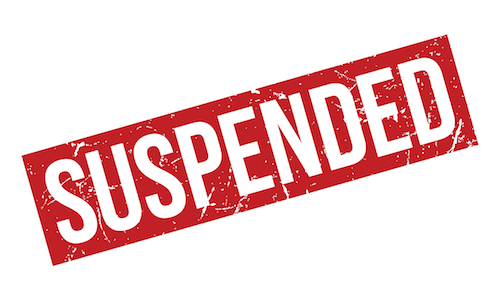I decreased my phone screen time by 80%—this is how I did it

Jason Tashea. Photo by Saverio Truglia.
It’s not that I hate technology, it’s just that I don’t like spending time with it. I know, that’s weird from a guy who writes, thinks and talks about tech for a living. Consider it contempt through familiarity.
Even so, like you at this moment, I spend a lot of time in front of screens—mainly computer and phone. While work makes divorcing myself from my computer impractical, the four to five hours a day I was spending on my phone seemed excessive.
Turns out, I wasn’t alone. Americans spend about three and a half to five hours a day on their phones. That’s up to 76 days a year! Collectively, 92 percent of that time is sucked up in mobile apps, according to analytics company Flurry. This is particularly shocking when you realize that 77 percent of American adults have a smartphone, according to the Pew Research Center.
Americans love their smartphones. However, this technology’s growing power over us is detrimental. Co-founder of the Center for Humane Technology and former design ethicist at Google, Tristan Harris, explains that smartphones and apps are designed like slot machines to be addictive and hijack our attention. Social media have been shown to cause depression, and an onslaught of notifications is nothing short of a manufactured panic attack. We’ve become so habituated by phones that 9 in 10 people experience “phantom vibration syndrome,” where one believes their phone has buzzed when it hasn’t.
Seeing myself in these statistics and studies, a few years ago I decided to test new ways to break my phone habit. While not every experiment worked, I’m now spending up to 80 percent less time on my phone, which decreased my notification-induced anxiety, freed up hours of previously divided and wasted time, and even improved my data security.
According to data going back the last six months, I would unlock my screen as many as 2,000 times a week to spend up to 22 hours on texting and chat apps, Twitter, news and email. And all this was after I’d already cut my usage by one-fifth.
Today, I look at my phone between 60 to 120 minutes a day. That’s an astonishing 45 to 60 days fewer a year that my attention is split between phone and reality or just reclaimed free time.
So, how’d I break the spell? I essentially ran a multiyear control trial on myself. In case you’re like me and want to look at a tiny screen less or it’s a New Year’s resolution on your list, here’s my roadmap.
I use an Android app called Quality Time to track my phone’s usage (Apple users with iOS 12 can use Screen Time), which includes screen unlocks, screen time and what apps I use, for how long and when. After I got my baseline of five hours a day, I started to test different approaches to decrease my time on the phone.
First, I turned off notifications for every app except text, phone and work email. Retweets, recipes from mom and chat notifications all got relegated to a time that I chose. This was immediately impactful both to my mood (after the withdrawal symptoms subsided) and time.
This simple change saved me an hour a day, which totals about 15 days a year. Here are walk-throughs on how to turn off notifications on Android and iOS phones.
With my new baseline at four hours of phone time a day, I next turned off my phone’s color.
Similar to notifications, your brain is triggered by the pretty colors on your phone. If that color is instead shades of gray, then your brain will be less stimulated and won’t desire the phone as much—at least that’s the argument.
After trying this for a few months, quantitatively and qualitatively, gray scale didn’t work for me. I think this could be for one of two reasons: Either Twitter is a hell of a drug (studies show social media might be) or by first turning off notifications, which are an intentionally attention-grabbing color, I’d dealt with the problem at its source. Either way, my time spent on the phone was about the same.
Qualitatively, color is necessary to use some apps to their full potential. For example, while using Maps to navigate, I couldn’t tell which roads were clear or blocked because the green, yellow and red that indicates traffic levels were all gray.
If you want to give gray scale a shot—it has worked for others—you can find the accessibility feature on your Apple or Android device.
In December, I started phase three of my phone detox by purging a significant number of apps, including those taking up disproportionate amounts of time. In the past, I would use over 40 different apps any given week.
I now have 17 non-native apps, like Lyft, my password manager Dashlane and Spotify, plus six from the Google suite, like Authenticator, Mail and Maps. I also deleted two-thirds of my news apps, and now only have the New York Times and Nuzzel, which aggregates news shared on my Twitter feed (a huge time saver in itself).
This culling was the most successful move to date. In a matter of weeks, I went from four hours of phone time a day to between 90 and 120 minutes. According to my usage app, I now unlock my phone closer to 1,000 times a week to use about 20 different apps, both improvements are a full 50 percent decrease from July.
Together, these steps are meant to bring friction back to technology. Apps themselves are meant to give us seamless, push-button access to anything we want. As others have written, there is a strong argument to intentionally use friction to free up our time and headspace. For example, by deleting my favorite chat app and Twitter, I can no longer impulsively—and mindlessly—share stories at the push of a button. If I want to waste time on social media on my phone, I have to log in through the browser, which is painful. (That said, while my overall phone usage is down, the use of my phone’s browser has increased anywhere between 25 and 50 percent over any given week since I deleted all my apps.)
This step has not only created great time savings, it’s also smart cybersecurity. Many of the apps on your phone are manufactured vulnerabilities and personal data vacuums. Recent research from Northeastern University found that of 17,260 apps for Android phones it studied, over half had the potential to take data collected through the phone’s camera or microphone or record the device’s screen. The popular Weather Channel app is being sued over accusations of deceptively collecting, amassing and selling users’ location data. Then there’s whatever Facebook has done with all of your information.
With a growing list of surreptitious apps, it’s no surprise that the ABA Standing Committee on Ethics and Professional Responsibility released Formal Opinion 483 last fall, which said a reasonable cybersecurity step may include avoiding technologies that are not necessary for a task.
The three changes I tried are only a fraction of possible changes you can make to your phone habits. There are other tools and approaches out there, like Apple’s iOS 12 Screen Time or the Gmail plugin InboxWhenReady. The Center for Humane Technology has a number of other recommendations worth exploring that I haven’t tested.
Even if the ink on your New Year’s resolutions has dried, consider breaking up with your phone this year. Over the past two years, I’ve reclaimed time, improved my mental health and inadvertently made my phone more secure. There isn’t a downside the best I can tell. One thing, though, if you Tweet this article, please cc me on a fax.
Jason Tashea is the author of the Law Scribbler column and a legal affairs writer for the ABA Journal. Follow him on Twitter @LawScribbler.



